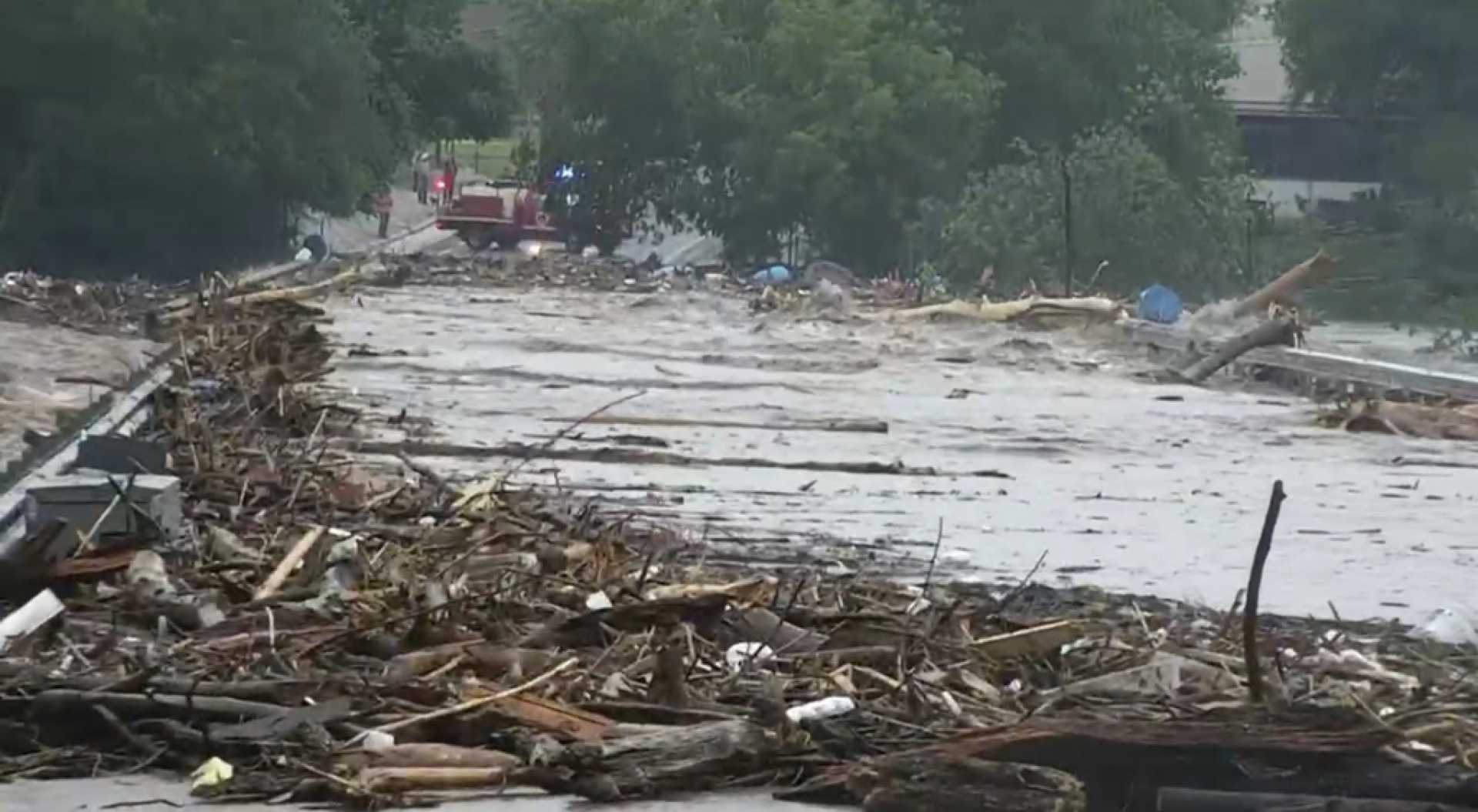News
Texas Declares Emergency After Historic Flash Flooding Kills Nearly 100

Kerr County, Texas – Central Texas experienced devastating flash flooding over the weekend, resulting in at least 94 deaths as extreme weather conditions struck the region. On July 7, 2025, torrential rain caused the Guadalupe River to rise 26 feet in just 45 minutes, leading to a flash flood emergency.
The National Weather Service reported heavy rainfall rates of 2 to 4 inches per hour in areas like Kerr and Mason counties, accumulating nearly 18 inches in some locations. “That volume of water falling over relatively short periods of time – that’s a disaster waiting to happen,” said Marshall Shepherd, director of the Atmospheric Sciences Program at the University of Georgia.
Atmospheric conditions favored slow-moving thunderstorms that contributed to this extreme weather. These storms lingered over central Texas, drawing in tropical moisture from the Gulf of Mexico and remnants of Tropical Storm Barry, enhancing rainfall.
Shepherd explained that a mesoscale convective vortex assisted in lifting moisture into precipitation, leading to extremely high levels of atmospheric moisture in the region. “Those are sort of the worst case ingredients, from a meteorological standpoint,” he said.
Additionally, the hilly terrain of the Texas Hill Country created a funnel effect, directing rain rapidly into rivers and creeks. The area’s topography and clay-rich soil contributed to flash flooding as the ground could not absorb the rainfall efficiently.
As severe drought conditions persisted in the region, they worsened the flooding risk. With a lack of moisture in the soil, water from the storms flowed rapidly, exacerbating the situation. “The landscape was probably quite dry, and so anything falling was probably running off quite rapidly,” Shepherd noted.
Despite alerts issued more than a day in advance, the timing of the storm late at night contributed to the high death toll. The Texas Department of Emergency Management had activated state emergency resources ahead of the holiday weekend, anticipating flooding threats.
The National Oceanic and Atmospheric Administration included flash flooding risks in its hazard outlook. Flash flood warnings were issued similarly to tornado alerts but may not have reached all residents due to potential cell service issues.
Ginger Zee, ABC News Chief Meteorologist, stated that NOAA weather radios are a vital tool for timely alerts. “A flash flood warning would have blared around 1:14 a.m. local time, about three hours in advance of the catastrophic flooding,” she said.
The flooding has left at least 11 campers unaccounted for, many of whom were from Camp Mystic, a Christian girls camp along the Guadalupe River. Advocates are now emphasizing the need for better emergency response systems and robust weather forecasting as climate change is expected to increase the frequency of such extreme weather events.
“This terrible tragedy highlights why policymakers need to invest in science-based weather models and effective local emergency alert systems,” said Rachel Cleetus from the Union of Concerned Scientists.












